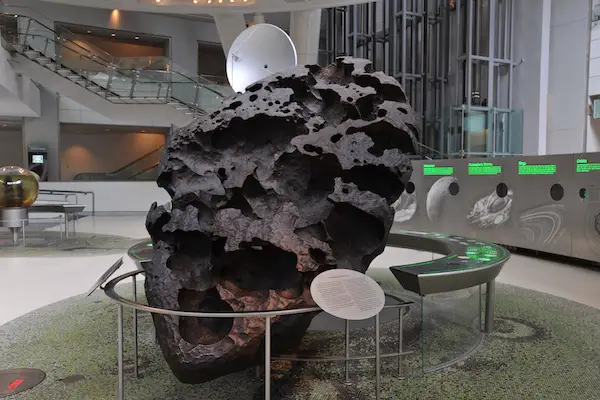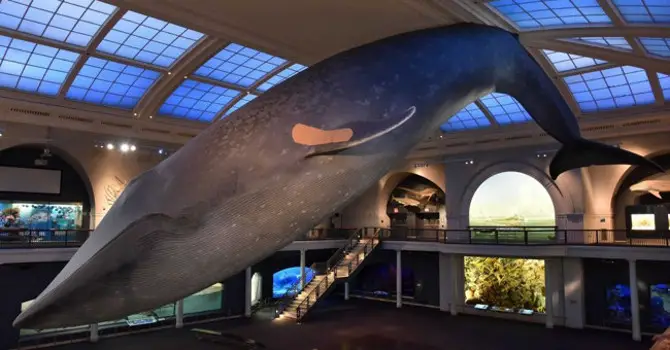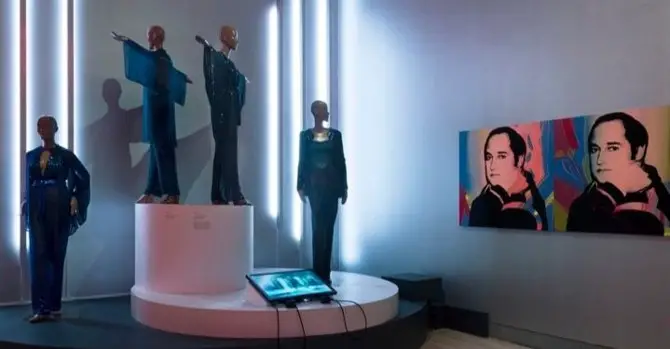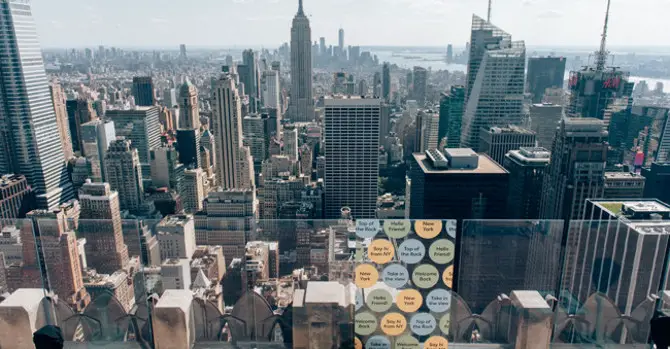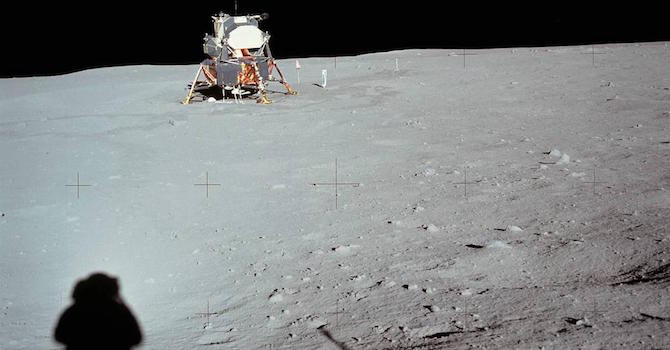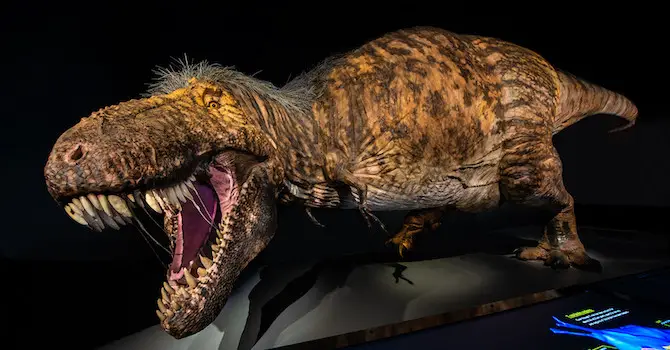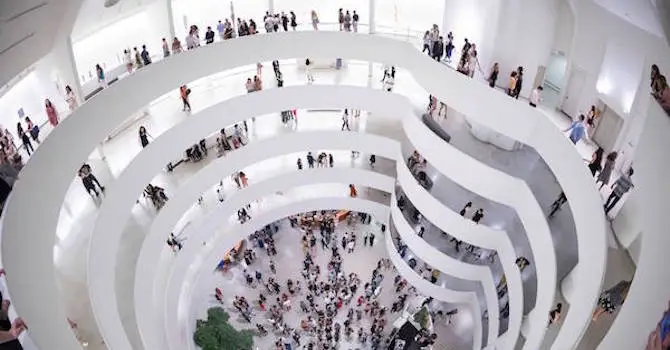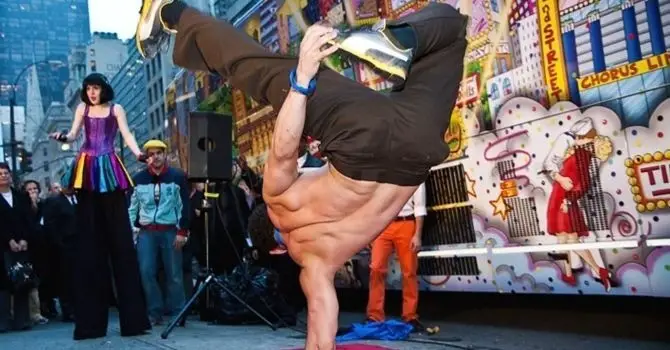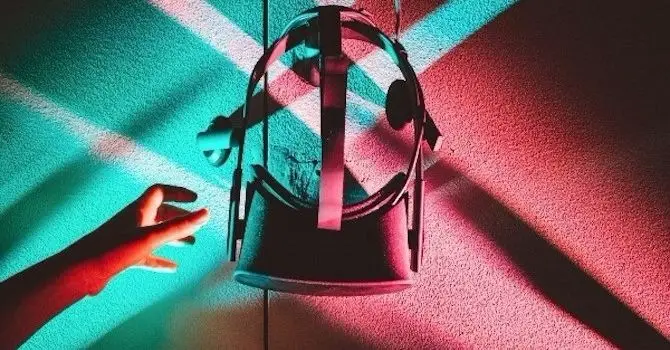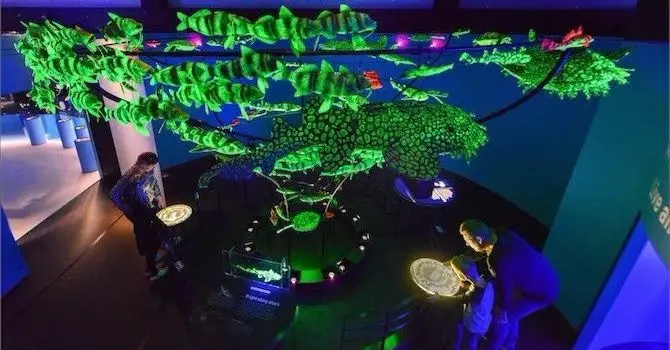This Is Why You'll Love the American Museum of Natural History
Holding down a large patch of land just west of Central Park, the American Museum of Natural History in NYC is one of the top scientific and cultural institutions in the world. Founded in 1869, this museum's mission of discovering and interpreting fossils, artifacts, and information about the natural world is still thriving today.
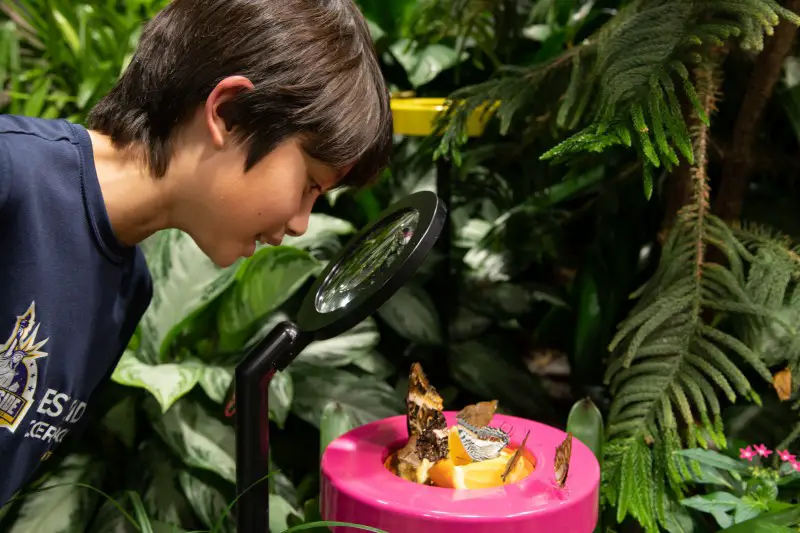
Magnifying glass stations in the Davis Family Butterfly Vivarium. Photo by Denis Finnin/© AMNH.
In May 2023, AMNH completed a multi-million dollar expansion with the opening of the Richard Gilder Center, a 230,000 square foot, three-story space that includes classrooms, a 5,000 square foot insectarium, a new 360-degree angle theater called Invisible Worlds Theater that presents an interactive film; a butterfly vivarium, a restaurant, and the Louis v. Gerstner, Jr. Collections Core, offering research and collections spaces, a library, and a learning center.
Containing dozens of exhibits and theater shows, it is one of the few museums that everyone will enjoy. The experiences visitors can choose from feel like a microcosm of life itself: from space and dinosaurs to gems and the big blue whale, to the artifacts of Asian and European civilizations and butterflies. In particular, the museum's fossil halls have gained worldwide acclaim and are popular with visitors of all ages.
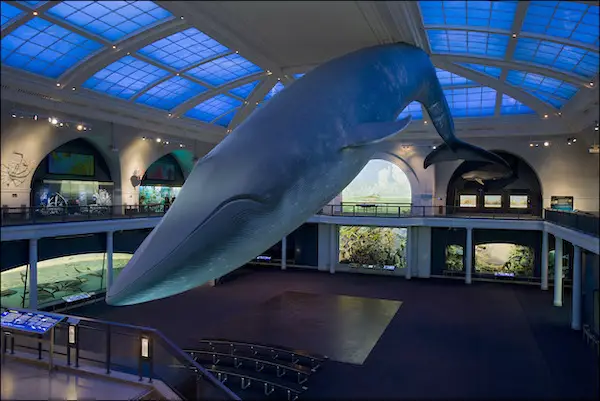
Photo credit: ©C. Chesek/AMNH
Temporary & Special Exhibits at the American Museum of Natural History in NYC
Each year, the American Museum of Natural History curates a handful of temporary and special exhibits so visitors are sure to learn something new each time they visit.
The museum’s current special exhibits include:
Opened in Nov. 2023, The Secret World of Elephants explores the astounding minds, bodies, and interactions of the Earth's largest land mammals. (And notes the urgency of conservation, with the species now down to only three surviving types—African savanna elephants, African forest elephants, and Asian elephants.)
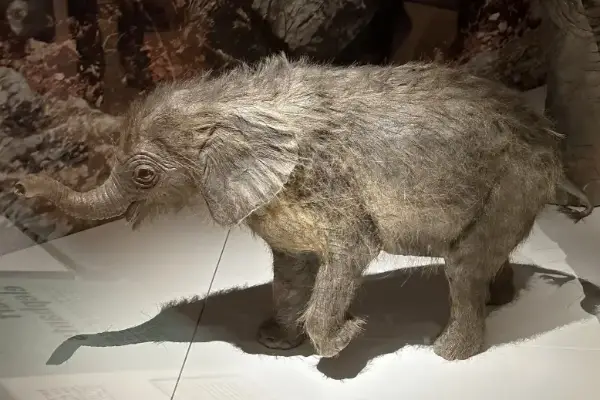
Photo by Linda Sheridan.
How do elephants “hear” with their feet, use the 16 muscles in their trunks, or reshape the forests and savannas they live in, creating an environment upon which many other species rely? This exhibit reveals new data about both modern and ancient elephant relatives, and explores the capacity of their intelligence, emotions (they remember their feelings even if separated for many years), and senses, why they're essential to the health of their ecosystems, and inspiring efforts to overcome threats to their survival.
Visitors can explore a multitude of interactive stations where they will be quizzed on elephant body language (friendly or not friendly) , listen to different elephant vocalizations (greetings, courtship, play, mourning), and touch teeth—one from a mammoth and one from a mastodon-like species. Reserve tickets here.
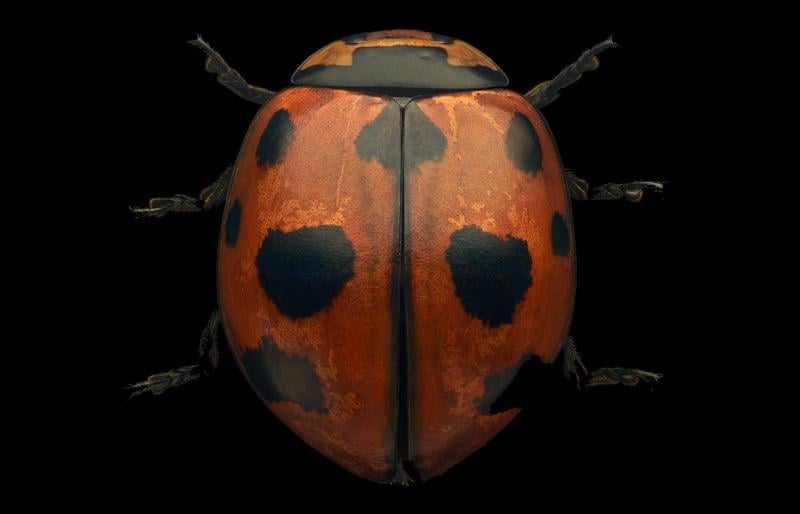
The ninespotted lady beetle, Coccinella novemnotata. © Levon Biss
Another special exhibit worth seeking out is Extinct and Endangered: Insects in Peril, which uses large-format photographs to bring 40 important but at-risk species into close focus. The specimens are taken from the museum’s own research collection, with photographer Levon Biss stitching together up to 10,000 images to reveal details lost to the naked eye.
Can’t-Miss Permanent Exhibits at the Museum of Natural History in NYC
Permanent exhibitions are housed in the Biodiversity and Environmental Halls, the Birds and Reptiles and Amphibians Halls, the Earth and Planetary Sciences Halls, the Fossil Halls, the Human Origins and Cultural Halls, and the Mammal Halls.
Can’t-miss highlights include:
- Blue Whale Model: It’s not a visit to the museum without seeing its iconic 94-foot blue whale model, suspended from the ceiling of the Irma and Paul Milstein Family Hall of Ocean Life. After you gaze at the whale, check out the other exhibits in the hall, including the coral reef diorama and the diorama depicting a giant squid and sperm whale clashing.
- The Titanosaur: A 122-foot cast of one of the largest dinosaurs ever discovered. This species lived in today’s Patagonia 95-100 million years ago, during the Late Cretaceous period.
- The revitalized Northwest Coast Hall features new exhibits developed with Indigenous communities and showcases the creativity, scholarship, and history of the living cultures of the Pacific Northwest.
- The Mignone Halls of Gems and Minerals tell the fascinating story of how the vast diversity of mineral species arose on our planet, how scientists classify and study them, and how we use them for personal adornment, tools, and technology. The galleries feature more than 5,000 specimens from 98 countries.
- Giant Sequoia Tree: This slice of tree, which came from a 300-foot tall specimen felled in 1891, offers a glance at more than 1,400 years of history.
- Rapa Nui (Easter Island) Moai Cast: This cast of an Easter Island Moai became a popular exhibit after it was featured in the movie Night at the Museum.
- The Willamette Meteorite: This 15.5 ton iron meteorite was found in Oregon. It’s the largest one found in the U.S. and the sixth largest in the world.
- Theodore Roosevelt Rotunda: Part of the New York State official memorial to the former president, it’s best known for the iconic dinosaur exhibit at the center. A Barosaurus protects its young from an Allosaurus.
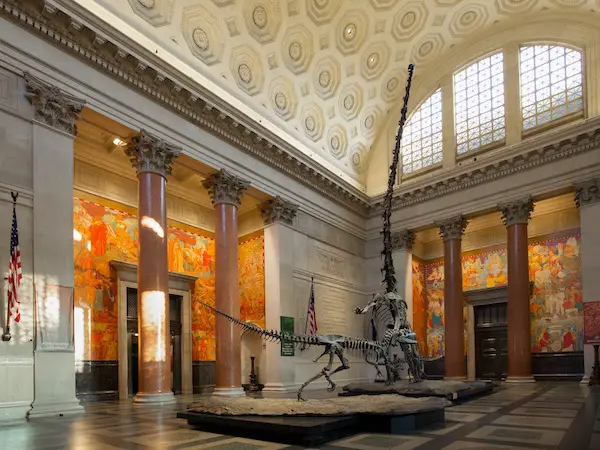
Photo credit: ©AMNH/D. Finnin
Want to scope out some of the museum’s most popular exhibits before visiting? Check out the American Museum of Natural History on Google Arts & Culture.
The Rose Center for Earth and Space & the Hayden Planetarium
For all the space-lovers out there, the Rose Center for Earth and Space is a must-see when visiting the museum of natural history in New York. The Rose Center includes permanent exhibits, the Hayden Planetarium, and Hayden Big Bang Theater for visitors to explore the cosmos. See the iconic Hayden Sphere, explore the 13-billion-year history of the universe, see a scale model of the universe, explore the formation and evolution of stars, planets, and galaxies, and more.
Every 30 minutes from 10:30am-4:30pm, the Hayden Planetarium shows Worlds Beyond Earth, which tells the story of the worlds that share our solar system and what makes life on Earth possible. Footage includes immersive visualizations of distant worlds, groundbreaking space missions, and breathtaking scenes depicting the evolution of our solar system.
Photo credit: ©AMNH/D. Finnin
Tips for Visiting the American Museum of Natural History in New York
- Download the museum’s free Explorer app (available in the Apple App Store and Google Play) before you go. It features an interactive map of the museum, behind-the-scenes stories about the exhibits, quizzes, and more.
- Free Wi-Fi is available in the museum.
- The Museum has two cafes and a food court that is open 10:30am-3:30pm. Visitors may also leave the museum for food and return using the same timed-entry ticket on the same day.
- Strollers are allowed throughout the museum, except theaters, though double strollers are typically not permitted in special exhibitions due to lack of space. Visitors with strollers are recommended to enter on 81st Street at the Rose Center for Earth and Space.
Visiting the American Museum of Natural History in NYC
Where is the American Museum of Natural History located?
The American Museum of Natural History is located at 200 Central Park West (between 77th and 81st streets) on the Upper West Side. It’s right across the street from Central Park (and just 5 blocks north of Strawberry Fields), which are perfect for a pre- or post-museum visit.
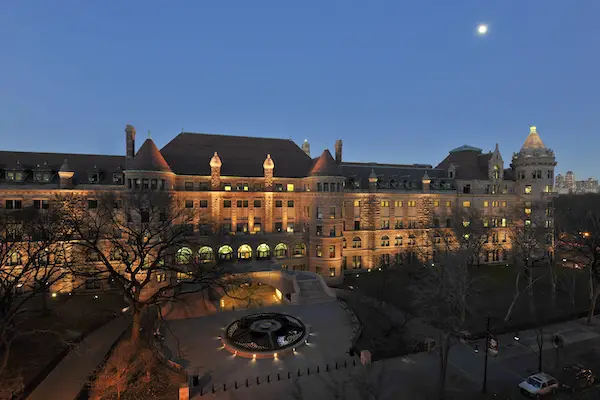
Photo credit: ©AMNH/D. Finnin
How do I get to the Museum of Natural History?
Take the C or B trains to 81st Street - Museum of Natural History Station or take the 1 train to 79th Street and walk 2 blocks west. There are also a few bus lines with stops near the museum, including M79, M7, M10, M11, M86, and M104.
Driving into the city? There’s parking at the museum on 81st Street, between Central Park West and Columbus Avenue. The parking garage is open Monday-Friday, 6am-11pm, and Saturday-Sunday, 8am-11pm.
What are the American Museum of Natural History’s hours?
The museum is open daily, 10am-5:30pm.
How much is admission to AMNH?
General admission is $28; $22 seniors ages 60 and older and students (with valid ID); $16 children ages 3-12; free for children ages 2 and younger. Access to films and special exhibits cost extra. Entry for members is free.
New York, New Jersey, and Connecticut residents (with ID) may pay what they wish for admission to the museum. All tickets must be reserved online in advance, as tickets are timed-entry to limit capacity.


